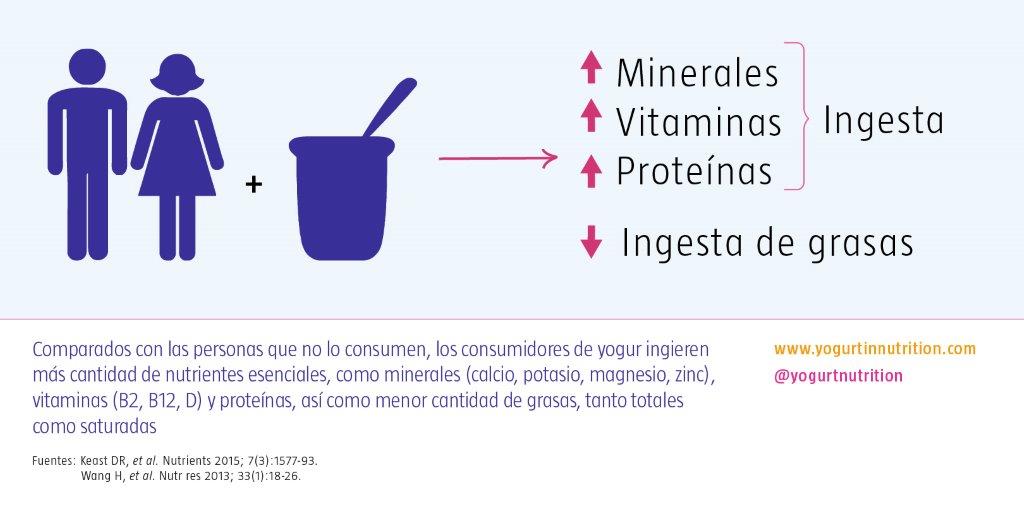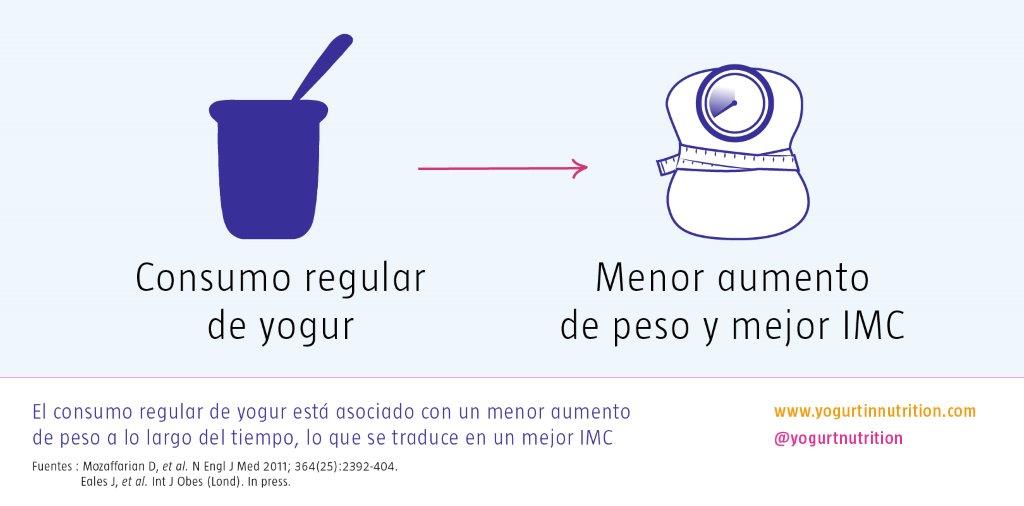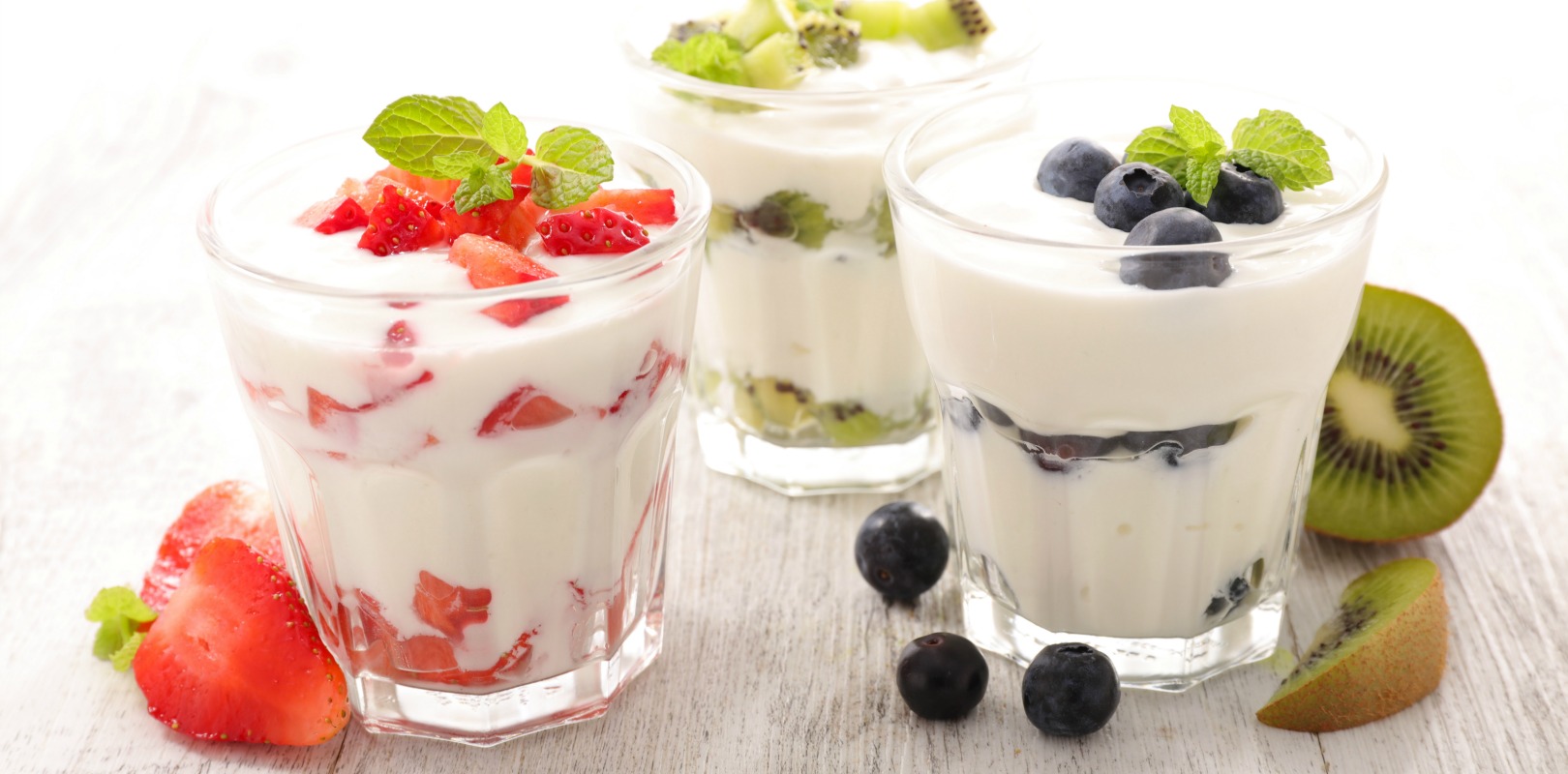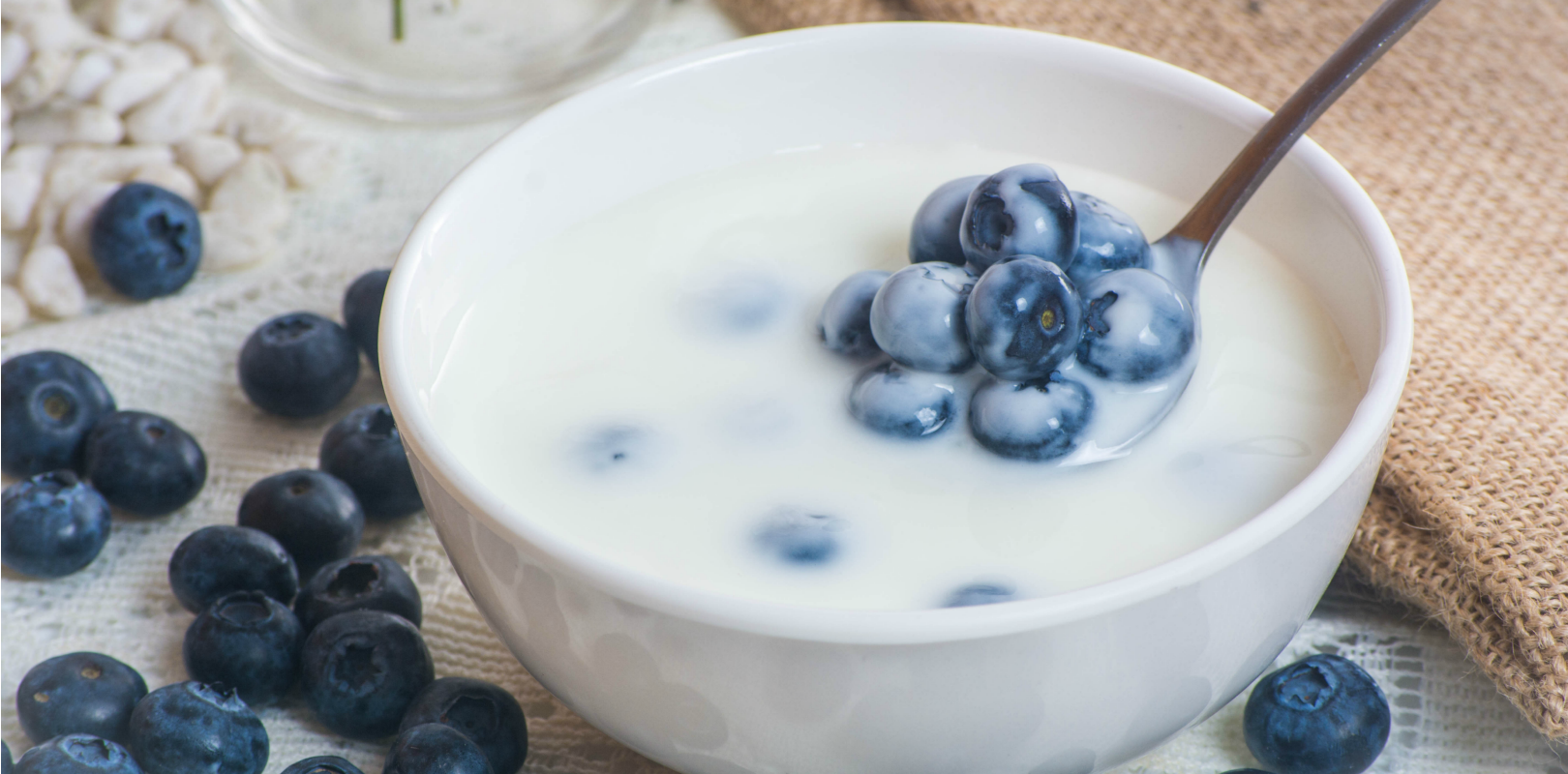Consumo de yogur y mejora en la ingesta de nutrientes clave




This systematic literature search identified prospective cohort studies of dairy foods and incidents of stroke in stroke-free adults. It included 18 studies with 8 to 26 years of follow‐up that included 762,414 individuals and 29,943 stroke events. The results showed that a 200-g increment in daily milk intake was associated with a 7% lower risk of stroke (relative risk 0.93). Cheese intake was marginally inversely associated with stroke risk (relative risk 0.97 per 40 g/day). Risk reductions were maximal around 125 g/day for milk and from 25 g/day onwards for cheese.
Although the study, published in the Journal of the American Heart Association, also found that high‐fat milk was directly associated with stroke risk, it was based on a limited number of studies. No associations were found for yogurt, butter, or total dairy. However, the authors note that further epidemiological studies are needed to provide more details about dairy types, including fat content.
To learn more, read the original article.
Source : de Goede et al. J Am Heart Assoc. 2016; 5: e002787. doi: 10.1161/JAHA.115.002787

A new Australian study suggests that dairy and yogurt consumption may increase health-related quality of life scores for many adolescent boys. Whatever the mechanism, this investigation showed us that promoting adequate consumption of dairy foods, especially yogurt, might benefit adolescent boys socially, academically or emotionally.
The study population comprised 960 middle-aged men (mean age 55.5 ±6.2 years), who were randomly selected from the general population in three French areas and followed over a median of 14.8 years. Risk of death in accordance with selected foods groups was assessed by Cox modelling after extensive adjustment for confounders, including a diet quality index. After extensive adjustment, yogurt and cottage cheese consumed in moderation were among the food groups that remained independently predictive of a lower risk of death (adjusted relative risk 0.50).
The study also highlights a lower risk of death for other food groups: a moderate consumption of other types of cheese (RR = 0.62), and bread (RR = 0.57), and an above-median consumption of milk (RR = 0.61) and fruits and vegetables (RR = 0.68). Besides, there was a non-significant trend for a higher risk of death, associated with highest sodium intakes. The authors conclude that a diet providing moderate amounts of diverse food groups appears associated with the highest life expectancy.
To learn more, read the original article.
Source : Bongard V et al. European Journal of Clinical Nutrition 2016;70:715-722. doi:10.1038/ejcn.2016.19

In this interview, Professor Philips explains what kinesiology is and then details what according to him are the most important benefits of yogurt.
Kinesiology is the study of human movement. I’m interested in the interaction between physical activity (exercise) and nutrition, specifically protein. As an essential macronutrient, protein provides the building blocks for all kinds of tissue, but my interest lies predominantly in skeletal muscle. Thus, we study conditions that lead to muscle growth or attenuate muscle such as that which occurs with aging.
Yogurt is a terrific food ‘package’, it’s rich in nutrients and very versatile as a food and food ingredient. For me the chief benefits of yogurt come from its incorporation into the dietary pattern of those looking to increase their protein intake, provide a healthy and satisfying snack, and improve the density of nutrients in their diet.
I think the realization that dairy, in particular yogurt, can have a preventive role for type 2 diabetes is one of the major benefits of yogurt (see http://www.ncbi.nlm.nih.gov/pubmed/26912494). In addition, I also think that the fact that higher protein intakes, still well within the acceptable macronutrient distribution range, are a good idea for older persons (see http://www.ncbi.nlm.nih.gov/pubmed/26960445) and that this is true on a per meal basis (see http://www.ncbi.nlm.nih.gov/pubmed/26980369) means that higher protein (Greek-style) yogurt have a big role to play, especially at breakfast.
Professor, Kinesiology and Medicine, McMaster University – Tier 1 Canada Research Chair – Skeletal Muscle Health
Stuart Phillips obtained a Ph.D. from the University of Waterloo in Human Physiology in 1995. He joined McMaster University in 1998 and is currently a full Professor in the Department of Kinesiology and School of Medicine. He is Tier 1 Canada Research Chair in Skeletal Muscle Health. He is also the inaugural Director of the McMaster Centre for Nutrition, Exercise, and Health Research and the Physical Activity Centre of Excellence. His research is focused on the impact of nutrition and exercise on human protein turnover, specifically in skeletal muscle. He is dedicated to understanding how exercise and dietary protein impact body composition, strength, and function in aging. His research is funded by the Canadian Institutes for Health Research, the National Science and Engineering Research Council of Canada, the Canadian Diabetes Association, the US Department of Agriculture, and the Canadian Foundation for Innovation. Dr. Phillips is a fellow of both the American College of Sports Medicine and the American College of Nutrition.
Twitter: https://twitter.com/mackinprof
Facebook: https://www.facebook.com/SMPPh.D/
LinkedIn: https://ca.linkedin.com/in/professor-stuart-phillips-ph-d-facsm-facn-9a02b811
Website: https://www.science.mcmaster.ca/kinesiology/people/faculty/292-Stuart%20Phillips.html

A specific role for yogurt with regard to obesity is increasingly being considered, but it is not fully understood. In this prospective study, Santiago et al showed that whole-fat yogurt consumption, but not low-fat yogurt, was associated with a higher probability of the reversion of central obesity in elderly at cardiovascular risk.
The study prospectively followed 4,545 individuals at high cardiovascular risk, and total, whole-fat and low-fat yogurt consumption were assessed, by using food frequency questionnaires. The results showed that after multivariable adjustment the waist circumference was lower, among whole-fat yogurt consumers (-0.23 cm in quintile 5 versus no change in quintile 1). Consumption of whole-fat yogurt was also significantly associated with a higher probability for reversion of abdominal obesity (43 % in Q5 vs no change in Q1).
The analysis also showed a higher probability of reversion of abdominal obesity with whole-fat yogurt consumption. Neither total yogurt consumption, nor low-fat yogurt consumption, were significantly associated with the reversion of abdominal obesity status or a lower waist circumference.
The authors concluded that whole-fat yogurt has more beneficial effects in the management of abdominal obesity in an older population at high cardiovascular risk.
To learn more, read the original article.

Although milk and yogurt are similar in their nutrient composition, yogurt possesses unique properties that may provide additional health benefits. These include its nutrient density, high digestibility, and bioavailability of nutrients and lactic acid bacteria, which may affect gut microbiota, and its food matrix. These unique characteristics of yogurt are blended together in harmony in such a way that it offers a benefit above and beyond the value of the inherent calcium, protein, live bacteria, whey, and so on. The whole is certainly greater than the sum of its parts: yogurt is a sustainable and healthy choice in a daily diet !
Prof Lorenzo Morelli (Italy) will present a historical overview of the studies, demonstrating lactose digestion and tolerance from yogurt, in lactose-intolerant people and remind us how yogurt can benefit lactose malabsorbers. Our second speaker, Prof Luis Moreno (Spain) will explain how recent studies reveal that yogurt consumption may be the signature of a healthy diet & lifestyle. The third session will be more interactive and moderated by Azmina Govindji, RD (UK). She will illustrate how simple yogurt swaps can improve nutrition and help saving calories and getting more nutrients. Finally, after defining what sustainability means by considering 4 complementary dimensions (environmental, economic, social and health), Prof Adam Drewnowski (USA) will discuss how yogurt can be considered as a sustainable choice.
The venue will be the Palace of Congresses of Granada. To view the place, click here.

Yogurt is a unique food, among dairy products, with a potential role not only in weight management, but also in type 2 diabetes prevention. In this publication, Panahi and Tremblay review a wide-ranging body of evidence, suggesting the specific properties of yogurt, such as food matrix, calcium, protein and the effect on microbiota in such a protective effect.
The authors found that although it remains controversial, several epidemiological and clinical studies have suggested a beneficial effect of yogurt consumption in the control of body weight and energy homeostasis. Yogurt possesses unique properties, including its nutritional composition; lactic acid bacteria, which may affect gut microbiota; and the food matrix, which may have a potential role in appetite and glycaemic control.
Among yogurt’s potential mechanisms of action, they pointed to an increase in body fat loss, a decrease in food intake and an increase in satiety, a decrease in the glycaemic and insulin response, an altered gut hormone response, the replacement of less healthy foods, and altered gut microbiota. Furthermore, the relative energy and nutrient content and contribution of a standard portion of yogurt to the overall diet suggest that the percentage daily intake of these nutrients largely contributes to nutrient requirements and provides a significant contribution to the regulation of energy metabolism.
To learn more, read the original article.
Source : Panahi et al. J Am Coll Nutr. 2016 Jun 22:1-15May;67(3):232-8.

The 2010 Dietary Guidelines for Americans made no population-wide recommendations regarding snacks due to inadequate evidence about their healthfulness. However, many common snacks are high in saturated fat, sodium, and sugars. An accurate measure of the nutrient density of snacks would be useful not only for consumers but also for researchers assessing the impact of snacks on overall dietary patterns.
The Nutrient Rich Foods (NRF) Index 10.3 was used to compare popular snack foods by their overall nutrient profiles. The NRF algorithm generates a single score for the nutrition quality of individual foods based on their amounts of nutrients to encourage (protein, calcium, vitamin D, potassium, magnesium, iron, vitamin A, vitamin C, vitamin E, and fiber) and nutrients to limit (saturated fat, sodium, and total sugar) per 100 kilocalories. High NRF scores indicate more nutritious foods. NRF scores were calculated for the top three selling products (based on 2014 market research data) in different snack categories. These NRF scores were averaged to provide an overall nutrient-density score for each category of snack food.
While some popular snack food categories, including cookies, chips, ice cream, and soft drinks had average NRF scores as low as -17, other top snack categories such as fruit, milk, and yogurt had overall high NRF scores up to 60. NRF scores for individual snacks ranged from -17 for carbonated soft drinks to 79 for low-fat milk. Although the Dietary Guidelines list specific nutrients to limit and nutrients to encourage, evaluating snacks based on whether they contain nutrients from these lists can obfuscate their overall nutrient profile. Foods like milk and yogurt, for instance, may contain nutrients to limit but also provide many other important nutrients and have high NRF scores. NRF scoring of popular snack foods does not support the overall categorization of snack foods as “unhealthy.”
To learn more, read the original article

Selected for you this week: a tip to benefit more from nutrient-dense foods in your diet, by HeraldNet.

